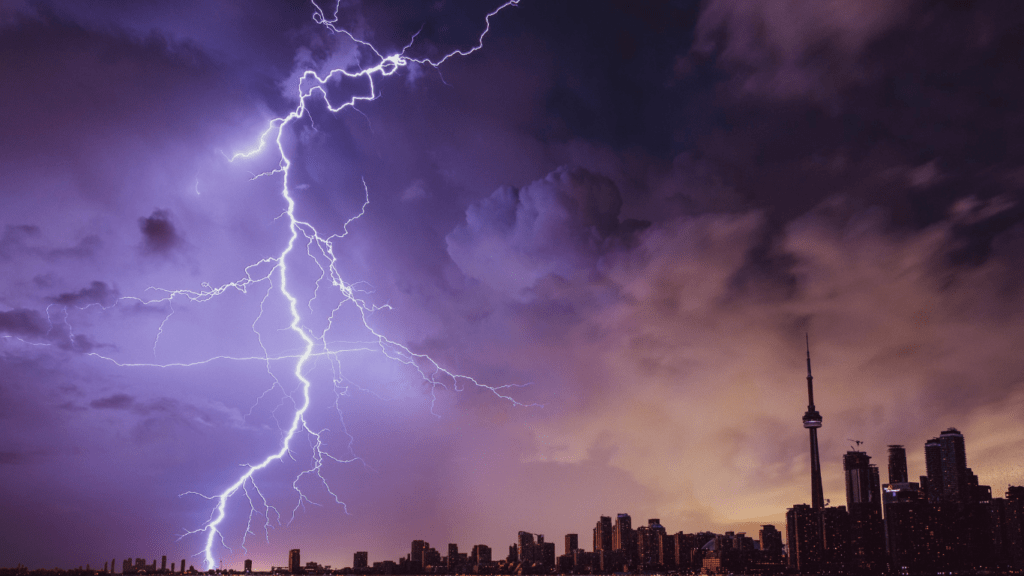Embarking on a hiking adventure is exhilarating, but nature’s unpredictability can catch even the most seasoned hiker off guard. When it comes to preparing for unexpected weather changes while hiking, being proactive is key. As an avid hiker myself, I’ve learned the importance of staying ahead of the weather to ensure a safe and enjoyable outdoor experience.
In this article, I’ll share essential tips and strategies to help you prepare for sudden weather shifts while out on the trails. From packing versatile clothing layers to checking weather forecasts before you hit the trail, these practical insights will empower you to handle whatever nature throws your way. So, lace up your boots, stay tuned, and let’s delve into how you can stay prepared for unexpected weather changes during your next hiking escapade.
Importance of Weather Preparedness for Hikers
Understanding the significance of weather preparedness is critical for hikers. Being aware of potential weather changes can make a significant difference in ensuring a safe and enjoyable hiking experience. As an experienced hiker, I know firsthand the importance of staying prepared for unexpected weather shifts while out on the trails.
Understanding Weather Patterns in Hiking Locations
When exploring new hiking locations, it’s crucial to familiarize oneself with the weather patterns in the area. By understanding the typical weather conditions, I can better prepare for any unexpected changes that might occur during my outdoor adventures.
Researching Local Weather Conditions
Before embarking on any hiking trip, I always make it a point to research the local weather conditions of the area I’ll be exploring. Checking weather forecasts, understanding average temperatures, rainfall patterns, and knowing the general climate of the region allows me to pack appropriately and make informed decisions while on the trail.
Identifying Signs of Changing Weather
While hiking, being able to identify signs of changing weather is essential for staying safe outdoors. I pay close attention to sudden drops in temperature, shifts in wind direction, darkening skies, and rapid changes in cloud formations. By staying alert and recognizing these indicators, I can adjust my plans accordingly and ensure my safety while enjoying the beauty of nature.
Essential Gear for Weather Changes While Hiking
When hiking in unpredictable weather conditions, I always make sure to carry essential gear that can help me stay comfortable and safe on the trails. Here are some must-have items you should consider packing to prepare for unexpected weather changes:
- Waterproof Jacket: A reliable waterproof jacket is a lifesaver when the skies suddenly open up. It keeps you dry and protects you from wind chill, ensuring you stay warm and comfortable throughout your hike.
- Layered Clothing: Dressing in layers is key to adapting to changing weather conditions. I recommend wearing moisture-wicking base layers, insulating mid-layers, and a waterproof outer layer to stay dry and regulate your body temperature.
- Extra Socks: Wet feet can quickly lead to discomfort and blisters. Packing an extra pair of socks in a waterproof bag ensures you can change into dry socks if needed, keeping your feet happy and blister-free.
- Emergency Blanket: Lightweight and compact, an emergency blanket provides crucial insulation in case of unexpected cold weather or an emergency situation. It can help retain body heat and protect you from the elements.
- Navigation Tools: In case the weather causes poor visibility, having reliable navigation tools like a map, compass, or GPS device is essential for staying on the right track and avoiding getting lost.
- Headlamp or Flashlight: Weather changes can bring early darkness or unexpected clouds, making it essential to have a headlamp or flashlight for visibility during low-light conditions. Don’t forget to pack extra batteries or a power bank.
By ensuring I have these essential pieces of gear with me while hiking, I feel more prepared to tackle whatever weather surprises come my way, making my outdoor adventures safer and more enjoyable.
Tips for Preparing for Unexpected Weather Changes
Ensuring proper preparation for unforeseen weather shifts is crucial for hikers to have a safe and enjoyable outdoor experience. As an experienced hiker, I have gathered essential tips to help you navigate through unexpected weather variations with confidence.
- Pack Versatile Clothing Layers:
Always carry clothing items that can be easily layered to adjust to changing weather conditions. For instance, pack a moisture-wicking base layer, an insulating mid-layer, and a waterproof outer shell to stay warm and dry. - Check Forecasts and Weather Patterns:
Stay informed by checking weather forecasts before your hike and understanding the typical weather patterns of the hiking location. This knowledge will help you anticipate potential changes and plan accordingly. - Research Local Weather Conditions:
Before embarking on your hiking trip, research the local weather conditions of the area you’ll be exploring. Familiarize yourself with typical weather trends, seasonal variations, and any specific weather risks in that region. - Identify Signs of Changing Weather:
While on the trails, pay attention to signs of weather changes such as sudden drops in temperature, increasing wind speed, or darkening clouds. Being observant of these cues can help you prepare for impending weather shifts. - Essential Gear for Weather Changes:
Equip yourself with essential gear to combat unexpected weather challenges. Carry items like a waterproof jacket, extra layers of clothing, spare socks, an emergency blanket, navigation tools like a map and compass, and a headlamp or flashlight for visibility in low-light conditions.
By following these tips and being proactive in your approach to weather preparation, you can enhance your hiking experience and ensure your safety while exploring the great outdoors.



 Ashleyen Gurganusoon, the founder of Terra Tactician Tactics, has always had a profound passion for the great outdoors and a deep-rooted belief in the power of nature to inspire and transform lives. With a background steeped in adventure and exploration, Ashleyen launched Terra Tactician Tactics to share her love for nature and to create a platform where outdoor enthusiasts of all levels can find valuable resources, expert advice, and the latest trends in outdoor activities. Her vision is to empower people to embrace the challenges and beauty of the wild, providing them with the knowledge and confidence to venture safely and enjoyably into nature.
Under Ashleyen’s leadership, Terra Tactician Tactics has become a trusted source for outdoor and survival enthusiasts worldwide. Her dedication to curating high-quality content on camping, hiking, backpacking, fishing, hunting, and adventure travel reflects her unwavering commitment to fostering a community that shares her passion for the outdoors. Ashleyen's approach is driven by her desire to help others experience the joys of nature and adventure while prioritizing safety, sustainability, and respect for the environment. Through Terra Tactician Tactics, she continues to inspire countless individuals.
Ashleyen Gurganusoon, the founder of Terra Tactician Tactics, has always had a profound passion for the great outdoors and a deep-rooted belief in the power of nature to inspire and transform lives. With a background steeped in adventure and exploration, Ashleyen launched Terra Tactician Tactics to share her love for nature and to create a platform where outdoor enthusiasts of all levels can find valuable resources, expert advice, and the latest trends in outdoor activities. Her vision is to empower people to embrace the challenges and beauty of the wild, providing them with the knowledge and confidence to venture safely and enjoyably into nature.
Under Ashleyen’s leadership, Terra Tactician Tactics has become a trusted source for outdoor and survival enthusiasts worldwide. Her dedication to curating high-quality content on camping, hiking, backpacking, fishing, hunting, and adventure travel reflects her unwavering commitment to fostering a community that shares her passion for the outdoors. Ashleyen's approach is driven by her desire to help others experience the joys of nature and adventure while prioritizing safety, sustainability, and respect for the environment. Through Terra Tactician Tactics, she continues to inspire countless individuals.